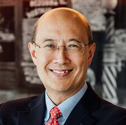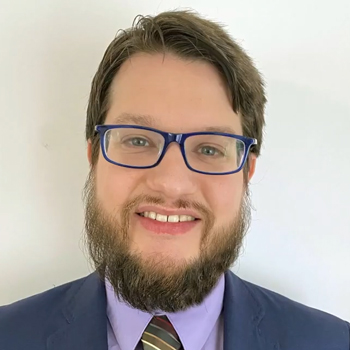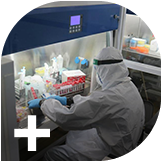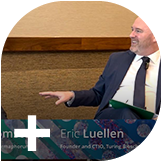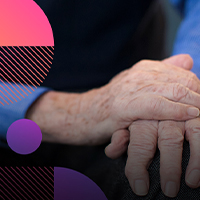Bridging the “risk gap” in biotech investing
It’s hard to imagine something more important to fund than lifesaving cures and therapies. Unfortunately, from a mathematical standpoint, those same cures and therapies can be a uniquely bad investment.
At the recent National Biotech Conference in Boston, US, MIT professor of finance and healthcare investor Andrew Lo took the stage in a closing keynote to explain exactly why that disconnect exists and how it can be remedied. Deep Dive caught up with Lo after the show to learn even more.
“I have to tell you, for the first few years, I really felt extremely uncomfortable talking with oncologists about investing,” Lo told Deep Dive. “It actually seemed offensive and obscene in the same breath talking about somebody's prospects for life or death and what the rate of return is on investments.”
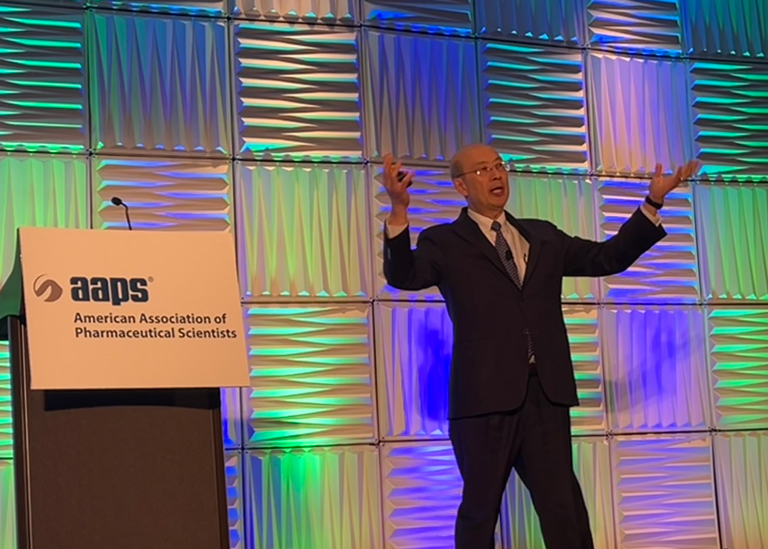
Image: Andrew Lo onstage at AAPS. Credit: Courtesy of Jonah Comstock
But, like the researchers he engages with, Lo found himself in this field for fundamentally human reasons – and this has helped him find the right way to have those conversations.
“Friends and family were dealing with various kinds of cancer, and I felt pretty useless to them,” he explained. “I decided that if I was going to really be useful to my friends and family, I needed to learn more about how drug development works. I made that my problem because I wanted to be useful to my colleagues. That brought me to trying to understand, from an economic point of view, why it was the case that more patients weren't getting treated by drugs that I knew were in development that could help them.”
Why drug development investments don’t pay
The upside for a biotech investor is very high, not only from a public good standpoint, but also when it comes to how much money there is to be made backing the next blockbuster drug. Unfortunately, the downside risk is large enough to cancel out that upside, a situation made worse by the fact that there’s no middle ground.
“Number one, it's extremely capital-intensive,” Lo said. “Number two, it takes a long time before you strike oil. Number three, the results are almost always binary. Either it doesn't work at all, and you lose literally everything, or it does work, and you're actually able to make a lot of money from the approved drug. Finally, and probably most importantly, it relies intensively on human capital to the point where, if a project is interrupted midstream because they run out of money, then that is often a death knell for the project. So, all of those things make it very difficult for typical investors, certainly retail investors, to be able to put money into biomedicine.”
That pass-fail reality is not the norm for other types of investments. If you invest in a parking lot or a shopping mall and run out of money halfway through, you still have a parking lot or a shopping mall, just with half as many spaces or stores as you planned.
“When you're developing a drug, either the drug gets approved, or it doesn't get approved,” Lo said. “If it doesn't get approved, there literally is no value to whatever you developed. You can't sell it for half price or 20 cents on the dollar. If a drug does not get approved, if it fails in clinical trials, it literally becomes worthless,” he said.
To make matters worse, even if a drug gets approved, it can still rapidly lose value if another drug is developed for the same condition with better outcomes.
“You’ve got to be better, not just than the placebo,” Lo said. “You’ve got to be better than the standard of care. As the standard of care goes up over time, you've constantly ratcheted up the quality of your drug, which is wonderful for patients, and is definitely the ethical thing to do, but that also makes it more difficult to be able to compete with a given area as the area progresses.”
Fixing the investment maths for biotech
When Lo set out to solve this problem around a decade ago, he discovered a counter-intuitive solution.
“I learned that there were 10,000 plus rare diseases that are so different, that have very different mechanisms of action for therapeutics, and that you could truly create a portfolio where the success or failure of one programme had little to nothing to do with the success or failure of another programme,” Lo explained.
The uncorrelated nature of these rare diseases, combined with the fact that rare disease therapies can get approval with smaller trials, turned the traditional maths on its head.
“You could reduce the risk at the rate of the square root of the number of projects,” Lo explained. “That's an implication that comes out of the uncorrelated nature of these shots on goal. That's when I decided to write a paper on rare diseases because nobody had pointed this out. Up until then, there were no portfolio companies that worked on multiple rare diseases all at the same time.”
Lo wrote up his findings in a paper and began to teach them in a class at MIT, but, for a while, they remained theoretical – up until a student of his, Neil Kumar, decided to put it to the test and founded BridgeBio – a biotech success story that currently has a market cap creeping up on $8 billion dollars.
“But this is not what the company is proud of,” Lo said in his talk at NBC. “The company is proud of that since 2015, this one little company, a little start-up, focusing on genetic conditions, has filed 20 clinical trials, 15 INDs, 30 drug development programmes, three FDA approvals, and three phase 3 programmes that are reading out this year.”
The hub and spoke model
BridgeBio is not the only company that’s adopted its diversified hub and spoke model. A 2021 McKinsey report detailed a number of successful companies leveraging this portfolio strategy since BridgeBio came on the scene.
The model creates diversification for investors while also finding savings in synergies and shared services.
“You have a parent company where the money comes in and they invest in the subsidiaries, each of which has its own dedicated scientific team,” Lo explained. “But the joint services that can be shared across all of these companies are being paid for by the parent company and developed at the parent company. Things like medicinal chemistry or toxicology, HR, regulatory affairs, clinical filing, all that stuff. Those are shared resources that all of these different companies don't have to create separately.”
In some ways, this model allows biotechs to emulate the large cash reserves and diversified programmes that large pharma companies rely on to solve the risk gap problem for themselves. But, Lo says, this model can have advantages even over big pharma.
“With this model, you've got individual decision making at the underlying subsidiary units that are very efficient,” he shared. “But if for some reason they end up not working out as well, you can discontinue that programme, take the people and move them into other parts, and do so with much less disruption. Also, in this hub and spoke model, the people in the subunits, the spokes, they get equity in what they're doing. As opposed to being in a pharma company, you get salary, but your equity is in the big pharma company. What you do has very little impact on the pharma stock price in the aggregate, whereas in the subsidiary model, each of these subsidiaries is like a very hungry lean start-up where everybody's working their utmost in order to achieve some commercial success.”
The future of biotech financing
Neither the hub and spoke model nor the general idea of aggregating uncorrelated drug programmes is the be-all and end-all of biotech financing, but it’s a very promising start, Lo says. He would like to see the industry explore other innovative ways to de-risk biomedical investment.
“Things like collateralised debt obligations, residential mortgage-backed securities – all of the tricks of the financial trade that were able to generate tremendous amounts of capital that led up to the financial crisis,” he said. “We can use those powerful tools to fund the biomechanical innovation as well, as long as we're careful not to abuse the tools the way that ultimately they were abused in the lead up to the financial crisis.”
About the interviewee
Andrew W Lo is the Charles E and Susan T Harris Professor at the MIT Sloan School of Management, director of the MIT Laboratory for Financial Engineering, and a principal investigator at the MIT Computer Science and Artificial Intelligence Laboratory. He serves on several corporate and non-profit boards and advises multiple biotech start-ups. Lo earned his BA in economics from Yale in 1980, followed by an AM and PhD in economics from Harvard in 1984.
About the author
Jonah Comstock is a veteran health tech and digital health reporter. In addition to covering the industry for nearly a decade through articles and podcasts, he is also an oft-seen face at digital health events and on digital health Twitter.
Supercharge your pharma insights: Sign up to pharmaphorum's newsletter for daily updates, weekly roundups, and in-depth analysis across all industry sectors.
Want to go deeper?
Continue your journey with these related reads from across pharmaphorum
Click on either of the images below for more articles from this edition of Deep Dive: Patients & Partnerships 2024





